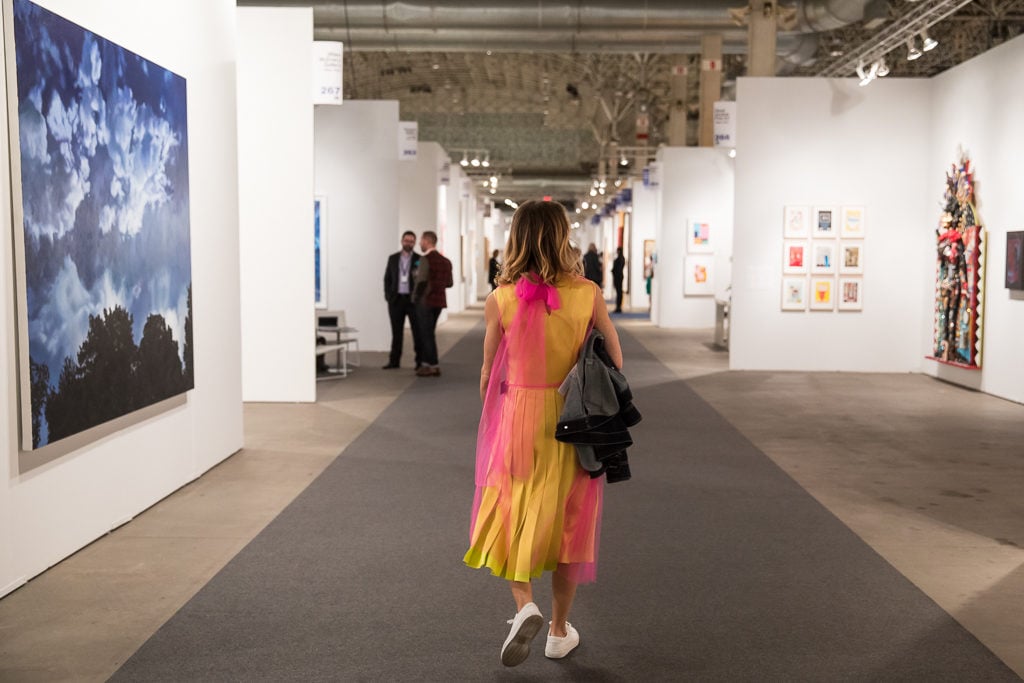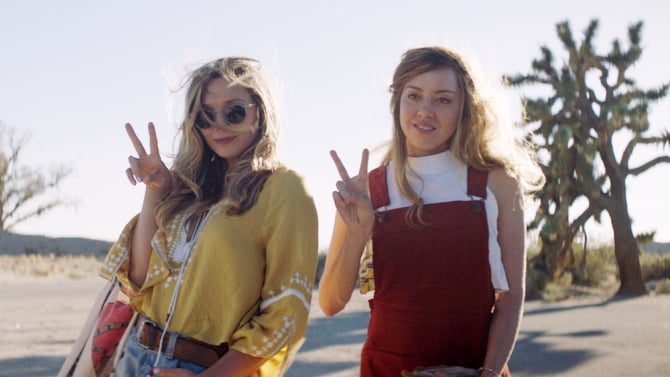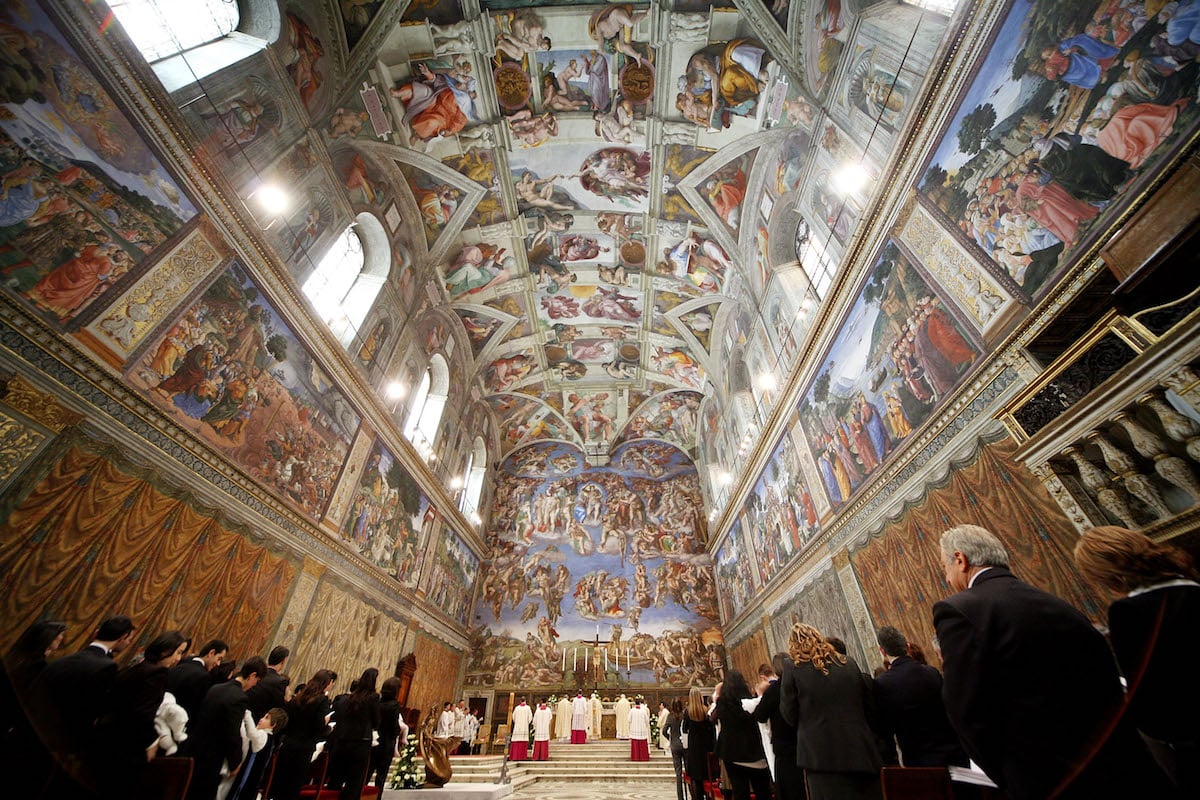Every Monday morning, Artnet News brings you The Gray Market. The column decodes important stories from the previous week—and offers unparalleled insight into the inner workings of the art industry in the process.
This week, considering the sequencing of an art-world recovery…
REGIONAL DOUBT
On Thursday, Neil Irwin of the New York Times opined that the lockdown era could accelerate the momentum toward economic nationalism and regional self-reliance that has been building around the world since the 2008 financial crisis. And I suspect that the factors powering the shift away from globalism will influence how the eventual resurrection of the art industry plays out, too.
The core of Irwin’s argument seems borderline-indisputable as the US enters its second month of stay-at-home life. Disruptions in the international supply chain for a variety of goods, from medical equipment to toilet paper, have cast a harsh light on how vulnerable individual countries and regions have become thanks to the logistics of globalization. After all, in Irwin’s words, globalization is a system “in which companies can move production wherever it’s most efficient, people can hop on a plane and go nearly anywhere, and money can flow to wherever it will be put to its highest use.” How naive does any single one of those expectations sound in the age of social distancing, let alone all three bear-hugging each other into an inseparable unit?
Globalization’s newly obvious pain points don’t necessarily mean that nations will retreat entirely to their respective corners, though. Some economies are now so interconnected that total isolationism borders on impossible. Yet the economics experts Irwin surveyed suggest major changes could be in store nevertheless. For instance, Susan Lund, a partner at consulting empire McKinsey, “envisions not so much a full-scale retreat from global trade as a shift toward regional trade blocs,” as well as a new commitment on the part of individual businesses to prioritize long-term resilience over short-term gains.
Similar themes emerged in much of what I read and heard in the art media this past week. And while I think geography will be a crucial factor in the art industry’s post-crisis restructuring, other, finer nuances are likely to play a role, too.
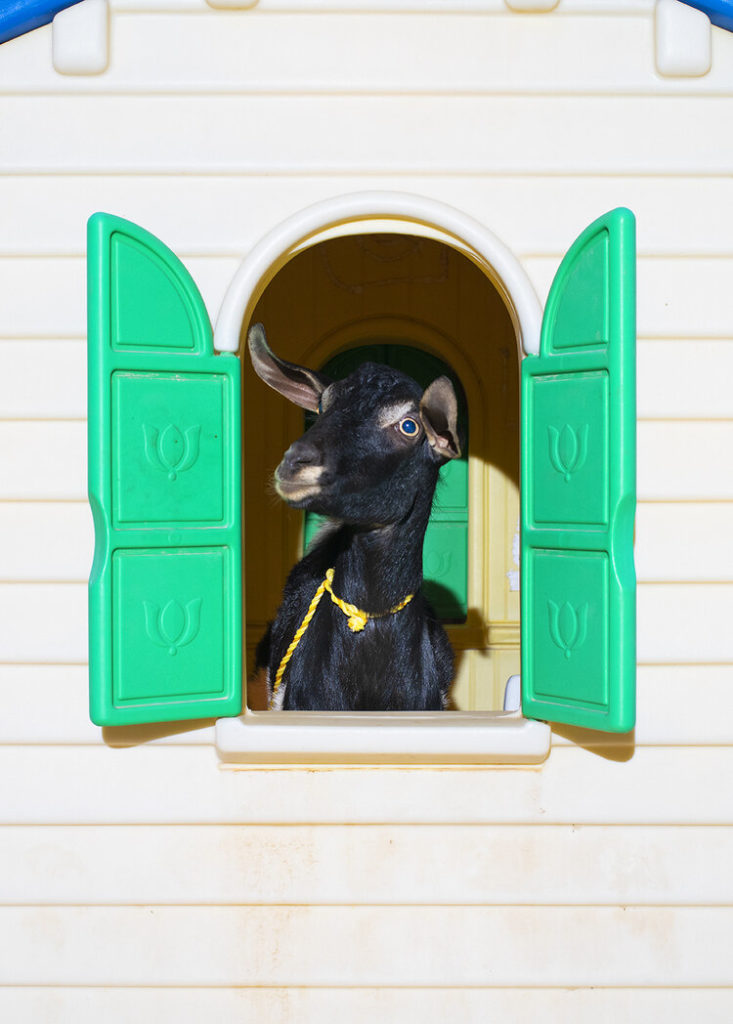
Farah Al Qasimi, Playhouse Goat, 2020. Courtesy of Helena Anrather.
HOME IS WHERE THE ART IS
Since the crisis began, a steady chorus has been calling out the titanic obstacles now facing the international art-fair circuit—and for good reason. The entire construct depends on thousands of art-industry professionals and collectors repeatedly mashing themselves into large crowds at airports and strapping in among large crowds on planes to fly multiple hours through recirculated air to join large crowds inside convention centers. For most health-conscious people, this process now sounds about as reckless as licking the nearest subway handrail like an ice-cream cone.
The longer the shutdown lasts, the more nervous people are likely to be about re-entering the world, too. And despite the art market’s stated intentions to re-emerge from hibernation in September—a month now crammed so full of events that the schedule looks like a misprint—I’m increasingly of the opinion that 2020 as a whole is over for art fairs and other crowd-dependent art-market events.
As evidence, consider that last week, the mayors of New York and Los Angeles both said that holding any mass gathering in their respective cities is “difficult to imagine” before 2021; a top-ranking scientist at the National Institute of Health announced that the organization’s admirable progress on a vaccine would still only make it widely available by spring 2021; and oncologist and bioethicist Zeke Emanuel projected that, “realistically, we’re talking fall 2021 at the earliest” for the return of conferences, concerts, and sporting events—a proclamation I expect his brother Ari, the CEO of Frieze’s majority owner, Endeavor, didn’t exactly accept with an attitude of yogic calm.
Like Susan Lund of McKinsey, I’m not suggesting that a global trade for art will collapse because of this fiasco. Elite collectors have been using private planes to avoid the masses long before there were urgent health reasons to motivate the choice. The internet will also continue to allow people to transact across oceans without having to physically leave their personal protective bubbles.
But while the age of social distancing has proven that it’s possible to create community-centric events for art online, I think it’s also proven that the IRL viewing experience still reigns supreme for most of us. And this notion returns us to the pivot toward “regional trade blocs” that Lund mentioned.
An art market justifiably paranoid about frequent international travel is an art market incentivized to fracture into regional and local interests. Short distances won’t just be advantageous on the other side of this mess because of convenience. They’ll also appeal because of the greater protection they afford. It’s the same calculus driving distributors in so many other industries to consider restructuring from largely global supply chains to ones centered closer to their actual end consumers.
For collectors, then, the question should ultimately become: Where can I see and buy art after the relative safety of a car ride rather than the high anxiety of a commercial flight?
If the logistical flaws and psychological after-effects of the social-distancing era undermine global travel and mass gatherings, sellers will have to adjust in all kinds of ways. How much international artwork is worth shipping to, and being exhibited in, new markets to try to convert regionally focused collectors? Does Art Basel go back to simply being the biggest fair in Europe instead of the biggest fair in the world? Does Gagosian really need to maintain a permanent space in Athens? The list goes on.
Yet geography won’t be the only factor that matters on the other side of the crisis, either. The return of the art world will be just as dependent on the setup of the specific destinations in question.
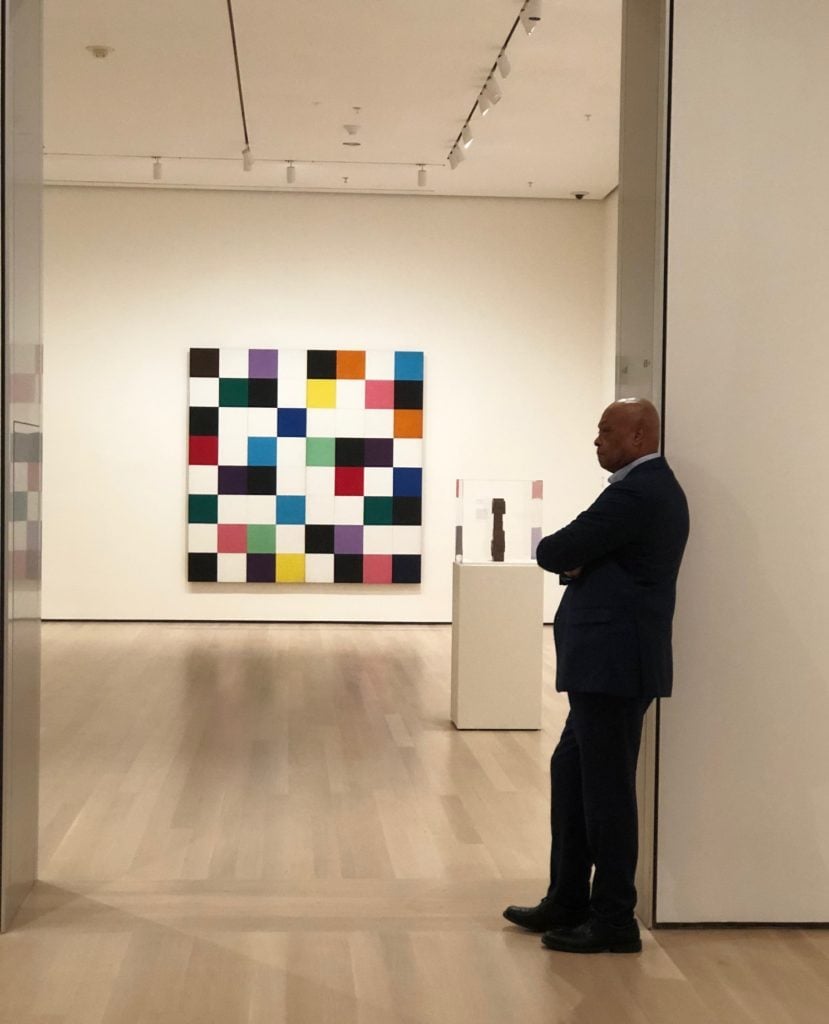
Installation view at the newly MoMA in October 2019. Photo: Caroline Goldstein.
FUNCTION FOLLOWS FORM
From what I’ve seen and heard, the anxiety about restarting the art market as we knew it largely revolves around art fairs, large museums, and gallery openings. The logic is sound on a macro level: they all hinge on large crowds, and large crowds are now potential public-health catastrophes.
However, I think this line of reasoning overlooks the amount of operational flexibility at these destinations—and ignoring that flexibility can trick us into thinking too narrowly about how and when a recovery could take hold.
Hard numbers help test our assumptions here. Colleen Dilenschneider, a data-centric consultant for cultural institutions, recently conducted a survey in which roughly 4,300 US adults expressed whether they were more or less likely to return to various cultural attractions once lockdown life is a thing of the past. Contrary to the dominant assumption I’ve heard from art professionals so far, museums ranked as one of only five options that respondents now consider even more desirable to visit than before the shutdown.
Why? The key doesn’t so much seem to be what’s on view, but rather how visitors view it.
In a later post, Dilenschneider distinguishes between “exhibit-based institutions” and “performance-based institutions.” The former (think: museums) are relatively large spaces where visitors can move freely and on their own schedule, absorbing a variety of different attractions displayed throughout the venue. Performance-based institutions (think: concert halls, ballets, movie theaters) tend to be smaller spaces where visitors settle into fixed positions packed tightly next to one for extended blocks of viewing time for a program over which they have no influence.
Broken down this way, it seems obvious why exhibit-based institutions might be more resilient than we think—and why concert halls, performing-arts centers, and movie theaters became, according to Dilenschneider’s survey, significantly less attractive destinations in the aftermath of social distancing.
Another critical factor to consider: exhibit-based institutions can introduce sensible operational measures to further limit their potential risks. Strategic advisor András Szántó outlined several possibilities in an op-ed on Artnet News last Tuesday, including timed entry, enforcement of the “six feet of personal space” rule, and a requirement to wear masks. I think it’s also very likely that museums will rethink their exhibition layouts post-lockdown, decreasing the number of works on view and spacing out their placement.
It’s not a coincidence that many of the same tactics are now at work in some galleries in Austria, which reopened to the public last week, and in Germany, where many others will reopen this Monday. (Seoul and other Asian art destinations, too, have been progressive on this front, which I’ll have more to say about later this week.) And in the final days before a total shutdown became necessary, some galleries in New York were already transforming their opening receptions into daylong events to space out foot traffic.
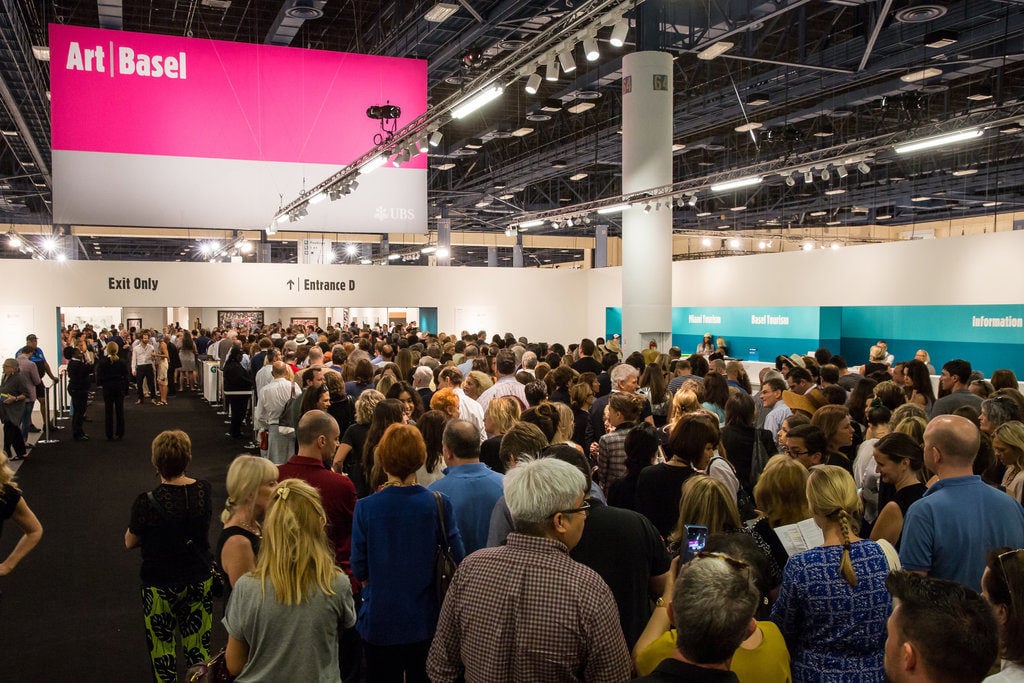
The lines to get into Art Basel in Miami. How much does this scene make you cringe now? Courtesy of Art Basel.
It seems somewhat harder, but not impossible, to implement many of these tweaks at art fairs as well. Aside from the viability of more heavily local and regional audiences, the main question might be whether timed entry and enforced social distancing inside the venue would make the economics unsustainable for organizers and exhibitors alike. Both adjustments would reduce the amount of paying visitors and, more importantly, the sense of frenzied competition and see-and-be-seen glitz that fueled the sector’s explosive growth this generation.
Still, the format positions fairs better than in-person auctions. Like stage plays, auctions require dozens of people to sit right next to each other in an enclosed space for a few hours at a time, with no control over the program. True, auction houses could follow the lead of pro sports leagues by putting an auctioneer in an empty room and conducting bidding remotely. But what would be the point, especially now that so many huge deals are decided before the public auction via financial guarantees anyway?
Add all this together, and a hierarchy starts to emerge. Regional and local destinations for in-person viewing should be preferable to international ones; exhibit-based destinations should be preferable to performance-based ones; and museums and galleries should be preferable to fairs—which should in turn be preferable to live auctions.
This new art-world order would mimic what Irwin and his experts foresee for the world economy at large, and it might also banish some of the most vilified aspects of the brand-dominated, travel-burdened, globally indistinguishable art trade of the early 21st century. Even if plays out this way, I doubt the situation will last forever. But we won’t know until we try, and that chance may be on its way.
[The New York Times]
That’s all for this week. ‘Til next time, remember: if you want to make the universe laugh, tell it about your long-term plans.
Follow Artnet News on Facebook:
Want to stay ahead of the art world? Subscribe to our newsletter to get the breaking news, eye-opening interviews, and incisive critical takes that drive the conversation forward.
